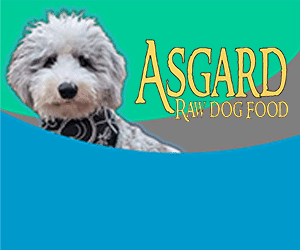The rider’s aids (seat, legs, and hands) are what create the riding communication between equines and humans. The rider’s lower legs are in contact with the horse’s barrel; the seat balances the rider’s torso and provides a base from which the legs and arms perform. The rider’s hands (whole arm) are in contact with the horse’s mouth through an extension of the rein. Riding is simply a nonverbal communication between a horse and a human.
The rider’s muscles, via leg, seat, and hands, talk to the horse by signaling it to either go forward, turn or slow down. At the same time as they give the signals, the rider’s muscles also have to be receptive to feeling what the horse is telling the rider through its body language. Riding horses is a communication of the rider’s muscles, talking and listening to the horse’s muscles at the same time.
The horse is on the rider’s aid when it strides or moves from the rider’s driving or directing leg through the rider’s torso (seat) and into the rein, which captures the horse’s forward motion. Then, the rider’s hands aid or signal this captured energy back into the horse’s hindquarters. Throughout riding, there is this constant communication between the rider’s aids and the horse’s muscular body. This has been termed a feedback loop or the ring of muscles or aids. This feedback loop of non-verbal communication where the rider signals the horse, and the horse responds is a continuous dialogue second by second and stride by stride. A rider that has developed a feel for riding will automatically respond to the horse’s movement without a thought getting in the way.
A proper riding position is required to attain the above feedback loop. An effective rider must be relaxed, aligned, and symmetrical. The rider’s body must learn to coordinate, not only how to ride the horse but also be used in a way to not interfere with the horse moving. A stiff or unbalanced rider will restrict the horse. A stiff or unfeeling ( unreceptive) rider will “short-circuit” the communication between them. In other words, the feedback loop will not be working. Have you ever said to yourself, “Gee, my horse just does not get what I’m asking him to do….?”
Acquiring the correct riding position is like learning to play a musical instrument. If you are learning to play the piano and your fingers are on the wrong keys, you will always play out of tune. The same applies to the primary position for riding a horse. Your body must be in the correct place to correctly signal the horse. Otherwise, the horse and rider will “short circuit” the communication between them. Once the rider’s body or the piano player’s fingers are positioned correctly, the rider (or piano player) can then learn how to ride or play harmoniously rather than being out of tune. Once a good riding position is acquired, a rider then needs to learn how to coordinate their aids without interfering with the horse’s movements and without interrupting their own body position. For instance, the rider must be able to coordinate an outside leg aid without the torso shifting weight or twisting. Or, be able to use a rein aid and not lean in either direction. The rider’s hands (arms) and legs are required to work independently while the torso stays balanced and centered on the horse. To continue with the music analogy, this stage of riding would be similar to a musician that has learned how to play notes on an instrument who can now string them together into a song.
Reading literature or watching YouTube videos about how to ride helps a rider intellectualize the use of the aids, but it is not enough. Knowing that the aids can be broken down into two categories, such as parallel and diagonal, provides the rider with an abstract knowledge of what is happening. But, as all riders eventually learn and most trainers teach, is that riding is a process of kinesthetic feeling, not just a concept. Riding is a relationship of nonverbal language, comprised of your muscles communicating to the horse’s muscles via the leg or calf on the horse’s abdominal muscle, the seat or glutinous muscles straddling its back or dorsal muscles, and the hands communicating to its tongue and mouth through the extension of the rein.
Acquiring this feeling of applying aids to communicate with the horse to have a feedback loop of nonverbal communication is accomplished by correct riding, correct riding, and more correct riding. Once these basics are established, riding as many horses as possible will enhance one’s ability because each horse’s need for a leg or rein aid varies. Thus, the rider learns to not only feel and be receptive to the individual horse through the aids but knows to apply the aids in a positive and influential manner.
Riding is a dynamic activity. Riders cannot be stagnant and expect to influence the horse. Once a rider journeys down the equestrian path, there is no doubt that their personal dynamics of communicating to the horse with a clear feedback loop will eventually develop. After years in the saddle, the rider’s aids will reverberate to the equine a perpetual harmony of two rhythmic bodies pulsating as one in a Silent Dialogue.



